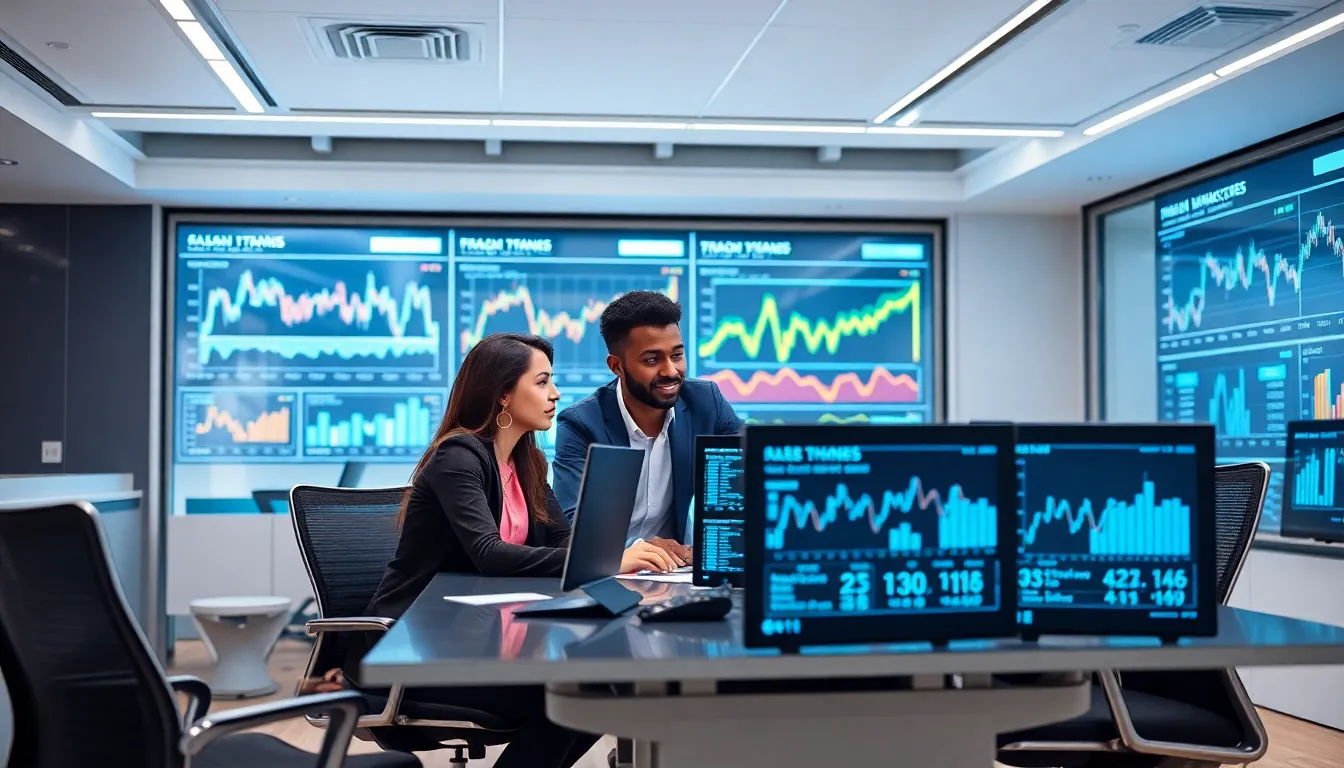Table of Contents
ToggleImagine waking up to a world where your trading strategies activate while you’re still snoozing your alarm. Sounds like a dream, right? Welcome to the realm of trading software development. This rapidly evolving domain is revolutionizing how traders interact with the financial markets. From algorithmic trading to risk management tools, the right software can give traders a leg up. Buckle up as we investigate into the nuances of trading software, its types, and what it takes to create these powerful tools.
Understanding Trading Software

Trading software refers to various programs that assist traders in buying and selling financial instruments. It serves as the bridge between the user and the marketplace, enabling effective execution of trades. In a nutshell, this software exists to make the trading process more efficient and user-friendly. Traders rely on it for market analysis, trade execution, and strategy testing, not to mention keeping psychological barriers at bay. Understanding its fundamentals can be the difference between success and failure in the fast-paced world of trading.
Types of Trading Software
Diving into the types of trading software can be akin to exploring a fantastical universe. Here’s a quick rundown:
- Brokerage Platforms: These are solutions provided by brokers that allow clients to trade within their specified guidelines. Many come packed with features like bid/ask spreads and charting tools.
- Algorithmic Trading Software: This category uses algorithms to make trading decisions based on predefined criteria. Think of them as your trading sidekick, fast, efficient, and never sleeps.
- Technical Analysis Tools: A must-have for analytical traders, these tools provide insights through charts and graphs, helping them understand market patterns.
- Backtesting Software: Before launching their strategies in the live market, traders can simulate their performance against historical data. Backtesting helps gauge the effectiveness of a strategy before real capital is at stake.
Each type offers unique benefits, catering to different levels of trading experience and expertise.
Key Features of Trading Software
When evaluating different trading software, certain key features stand out:
User Interface
A clean, intuitive design is essential. Traders shouldn’t have to navigate through an obstacle course to execute trades.
Real-Time Data
Market conditions can change in mere seconds. Software must provide real-time data updates to keep traders informed.
Security Protocols
Given the sensitivity of financial transactions, robust security measures should be paramount to protect user data and funds.
Customization Options
Different traders have varied needs. Being able to customize settings can improve user experience significantly.
Analytical Tools
Integrating analytical tools helps traders make informed decisions, optimizing their strategies.
The Development Process
Developing trading software is no walk in the park. It typically consists of several key phases:
- Requirements Gathering: It begins with understanding what traders need. This stage involves interviews, surveys, and market research.
- Design: Crafting the software’s architecture and user interface takes visionary talent. It’s crucial to design a layout that will enhance the user experience.
- Development: This is where the magic happens. Coders and developers come together to build the software, translating designs into functional attributes.
- Testing: Rigorous testing ensures the software performs as expected, fixing bugs and glitches before the launch. This phase often includes unit, integration, and performance testing.
- Launch and Maintenance: After a successful testing phase, the software is launched. Continuous maintenance is needed to keep the software up to date based on user feedback and market changes.
Choosing the Right Technology Stack
Picking a technology stack might feel like choosing a favorite child, but it’s important. Here’s how to simplify the decision:
- Languages: Languages like Python, C++, and Java are popular for exceptional performance. Each has its own pros and cons depending on the use case.
- Frameworks: Opting for reliable frameworks can boost development speed and security. For example, Node.js is great for real-time data handling.
- Databases: Selecting the right database is critical for storing and retrieving the necessary data efficiently. MySQL and MongoDB are common choices.
The right stack not only enhances performance but also ensures scalability in the long run.
Challenges in Trading Software Development
Developers face various challenges in this high-stakes environment:
- Market Volatility: Financial markets change rapidly, requiring real-time updates and adaptability from the software.
- Regulatory Compliance: Developers must navigate the maze of regulations in different jurisdictions, ensuring the software adheres to all legal requirements.
- Integration: Effectively integrating various APIs and services can be like solving a tricky puzzle, complex but rewarding when done right.
Each of these challenges necessitates innovative thinking and agile methodologies to overcome and create robust trading solutions.
Future Trends in Trading Software
The future of trading software shines bright with several emerging trends shaping its landscape:
AI and Machine Learning
Integrating AI can provide personalized trading experiences, enhancing both speed and efficiency. Machine learning algorithms can analyze vast amounts of data faster than humanly possible.
Blockchain Technology
More platforms are considering blockchain for enhanced security and transparency in transactions, decreasing fraudulent activity.
Mobile Trading Apps
As the world goes mobile, so too will trading software. Apps designed for trading on the go are becoming a staple for modern traders.
Social Trading
Platforms that allow traders to emulate the strategies of successful others are on the rise, making trading more collaborative.
Keeping an eye on these trends can offer traders a competitive edge.




